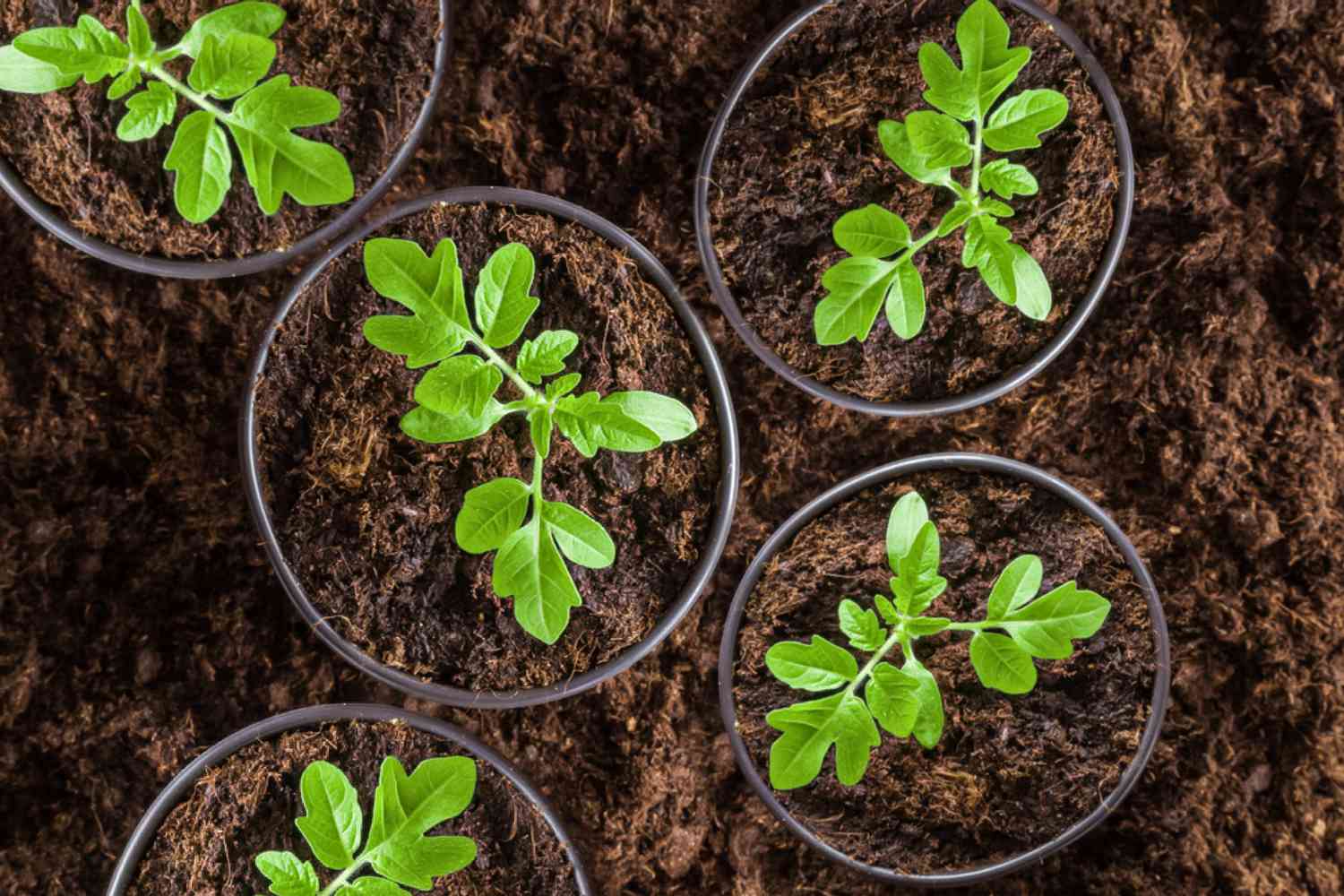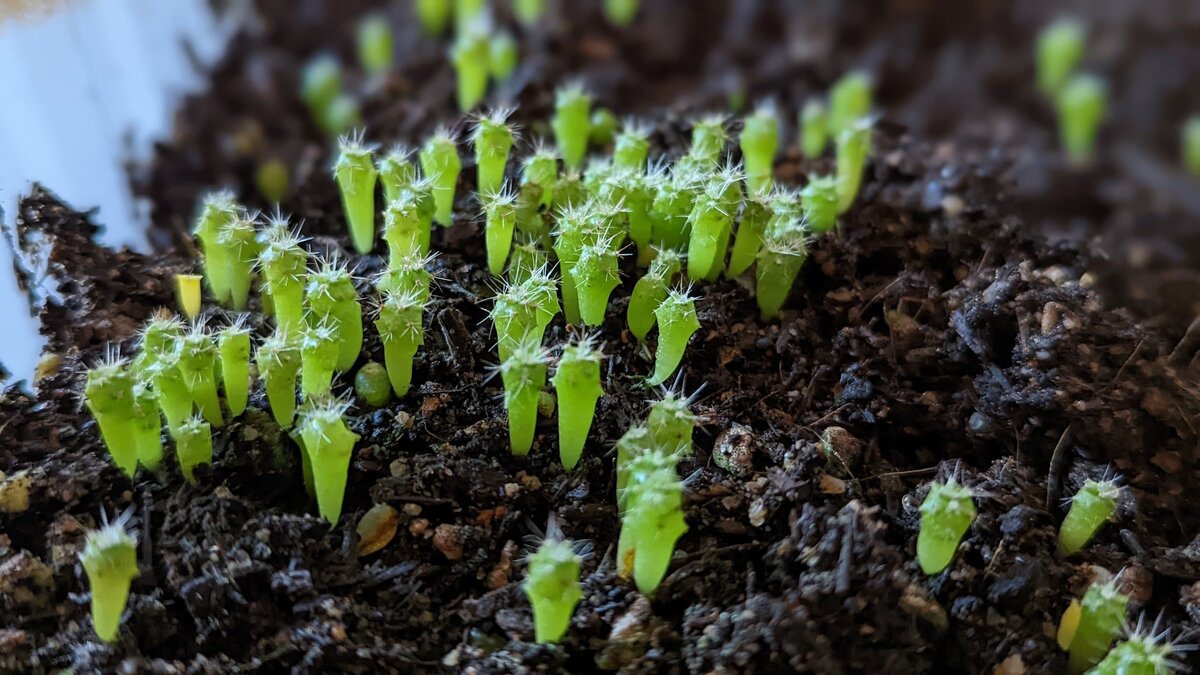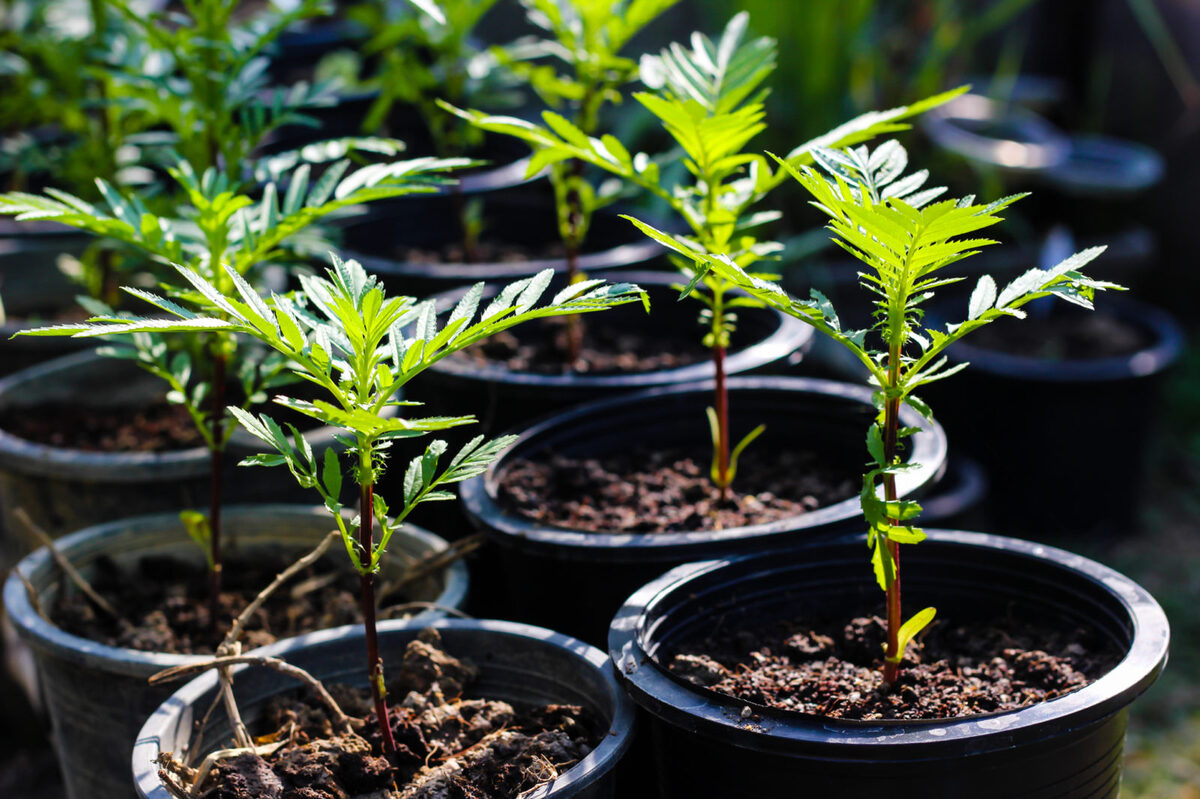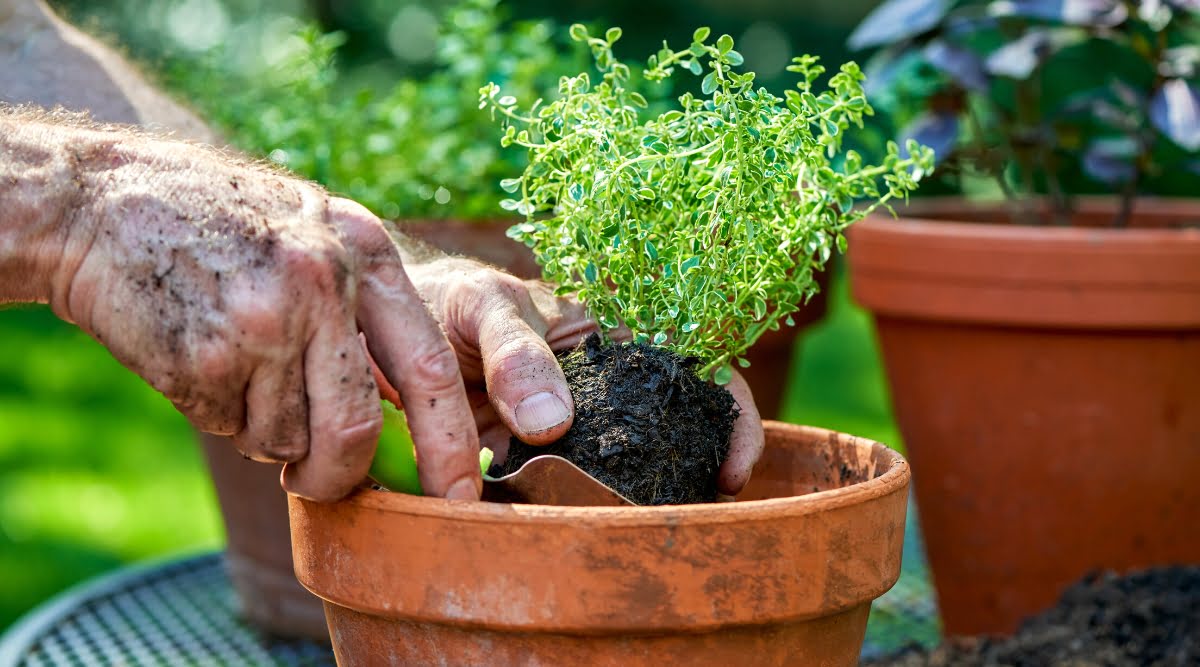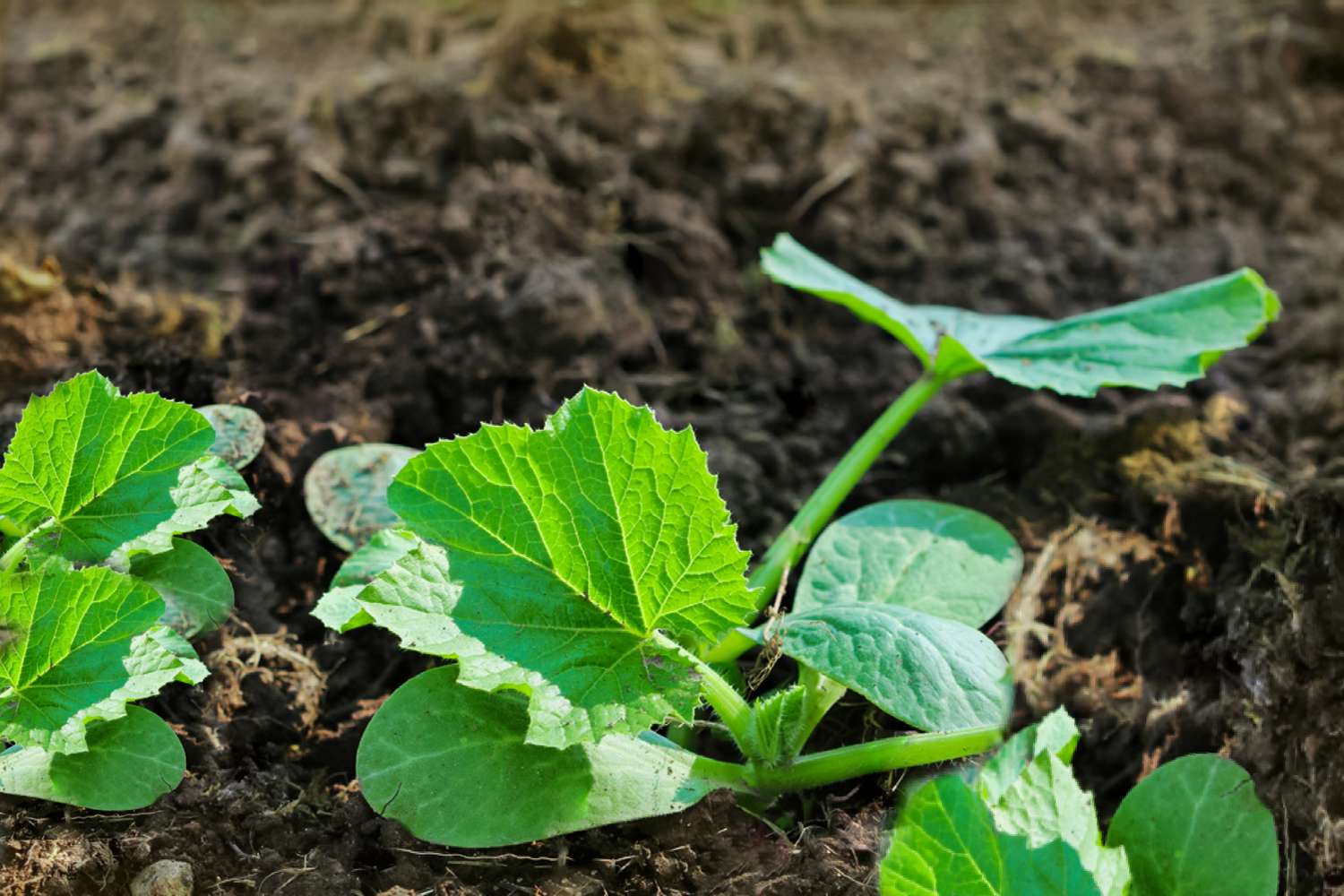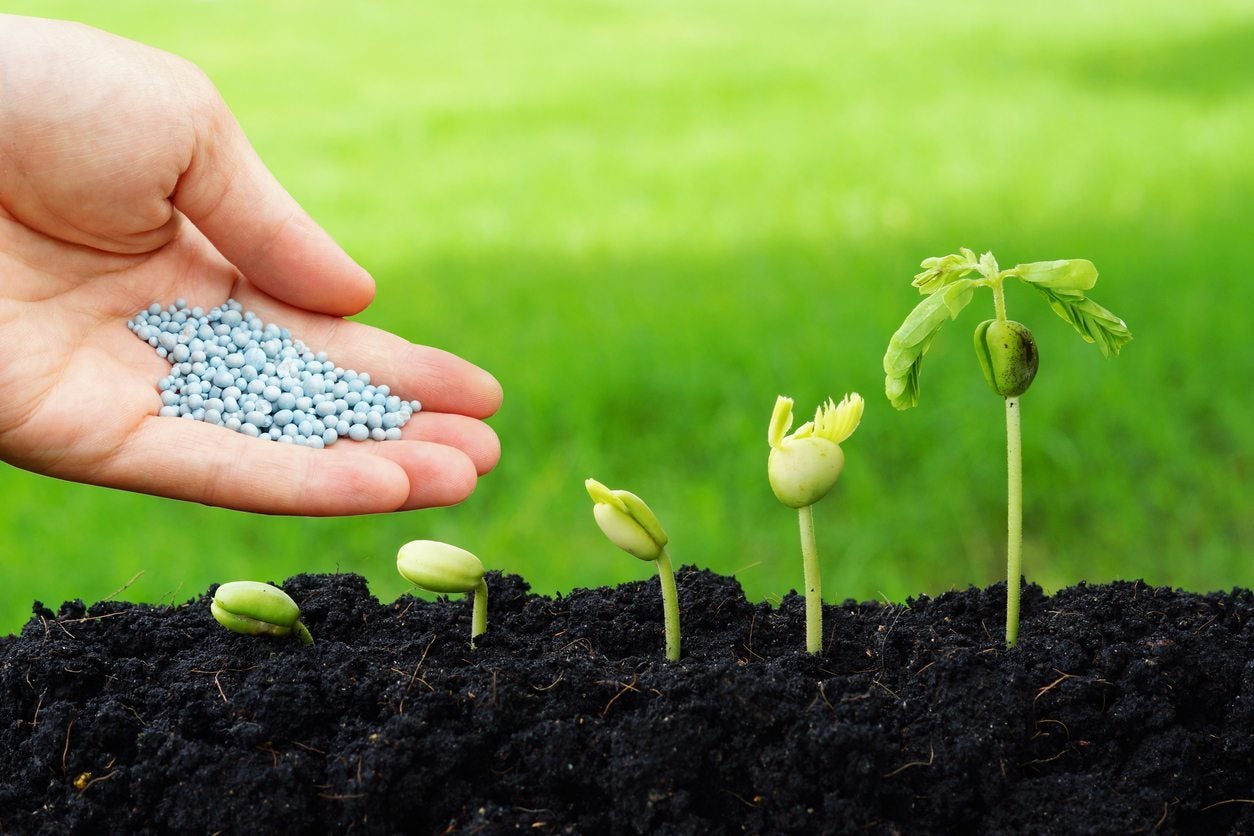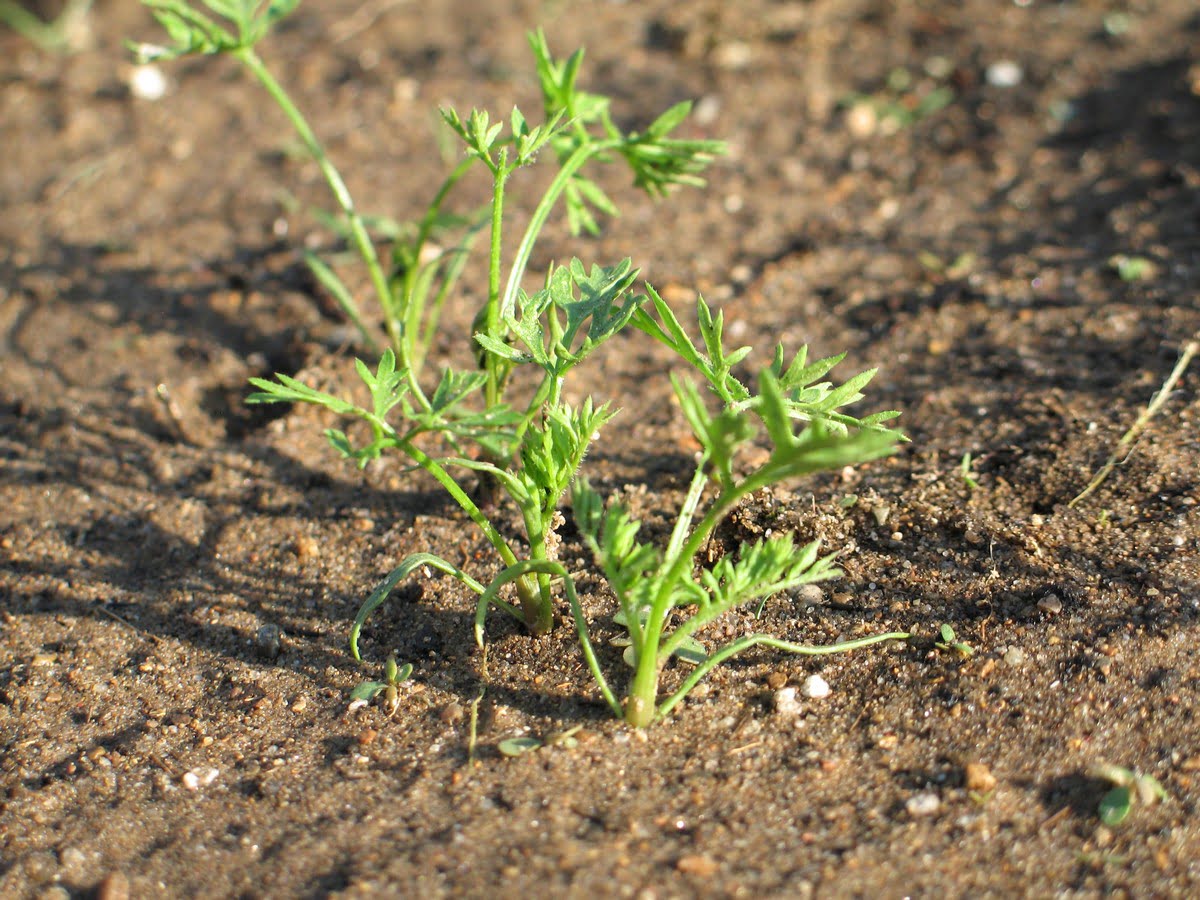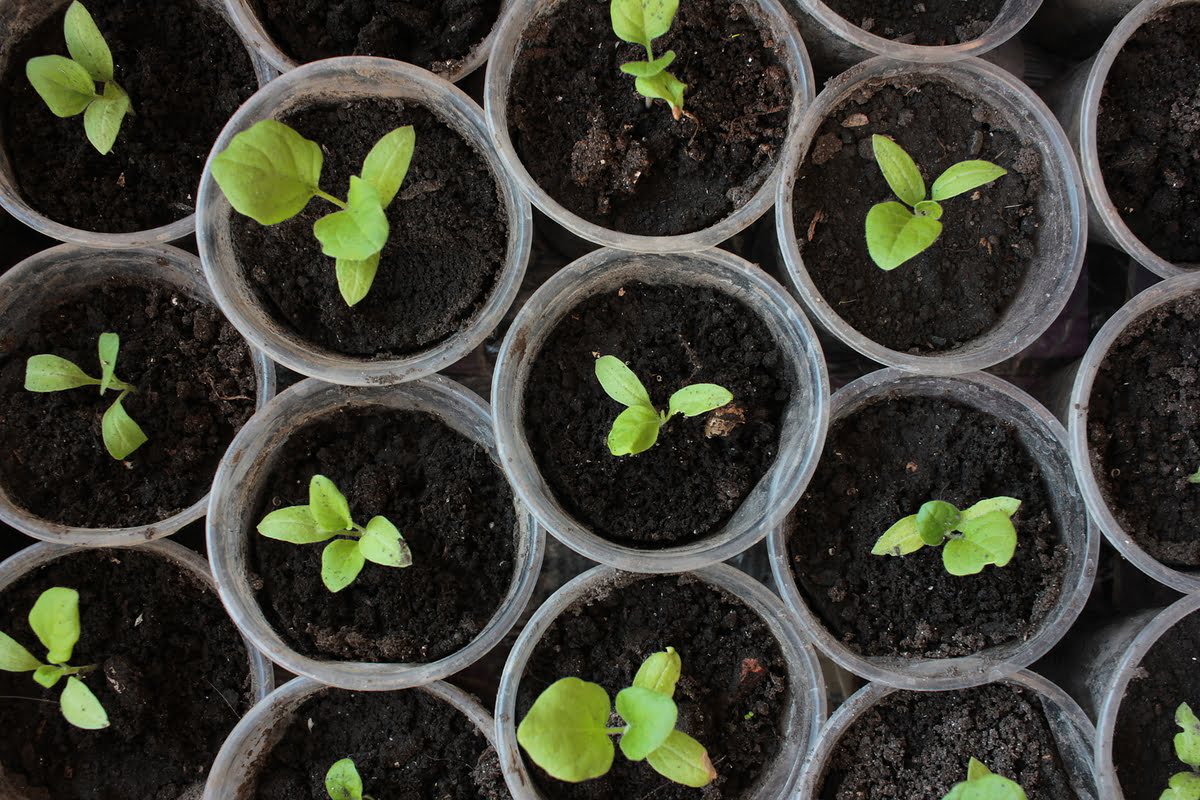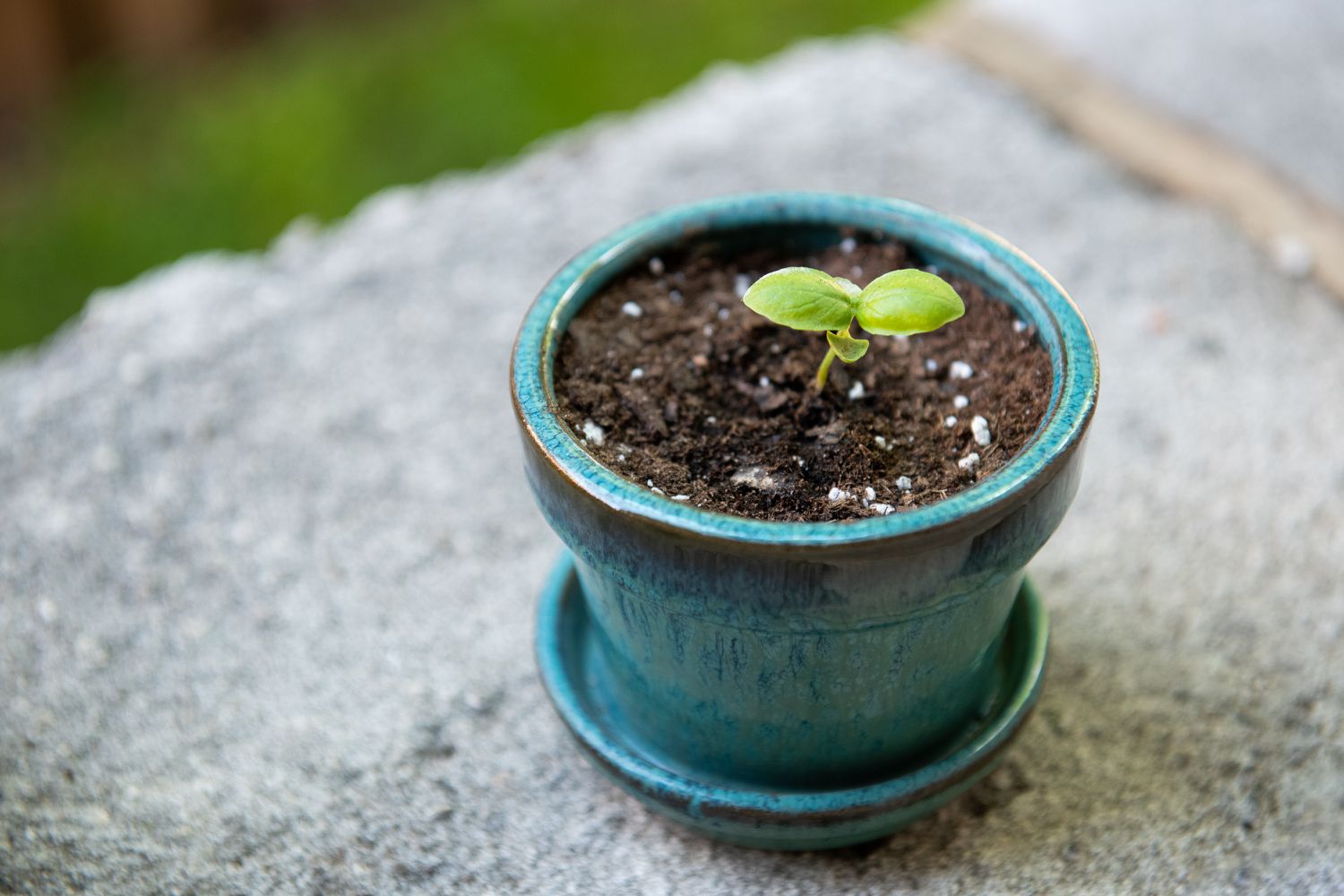Home>Gardening Techniques>Plant Care>When To Pot Up Seedlings
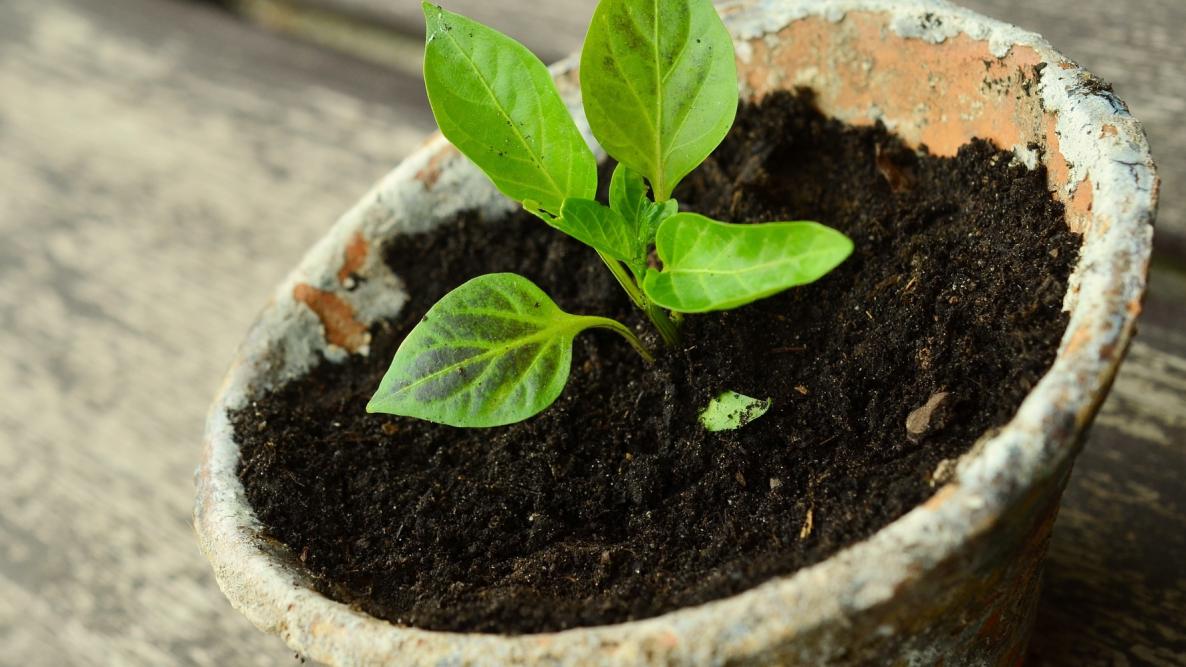

Plant Care
When To Pot Up Seedlings
Published: January 4, 2024
Learn the best time to pot up your seedlings for optimal plant care. Find out when to transplant and how to ensure successful growth.
(Many of the links in this article redirect to a specific reviewed product. Your purchase of these products through affiliate links helps to generate commission for Chicagolandgardening.com, at no extra cost. Learn more)
Table of Contents
Introduction
Welcome to the world of plant care! Whether you’re a seasoned gardener or just starting out, one of the essential skills to master is potting up seedlings. This process involves transplanting young plants from their original containers to larger pots. It may seem like a simple task, but doing it properly can greatly improve the health and growth of your plants.
When you sow seeds and they germinate, the resulting tiny plants start to grow. At this stage, they need more space, nutrients, and room for their roots to develop. This is where potting up comes in. By transferring seedlings into larger pots, you provide them with the necessary resources to thrive and develop into robust, mature plants.
The act of potting up is not only important for the well-being of your seedlings but can also be a rewarding experience for you. It allows you to connect with your plants on a deeper level, nurturing them from their humble beginnings into flourishing specimens. Plus, there’s nothing quite like the satisfaction of watching your seedlings grow and bloom.
In this article, we’ll explore the significance of potting up, the signs that indicate when seedlings need to be potted up, and the best time to carry out this process. We’ll also provide you with step-by-step instructions on how to pot up your seedlings effectively, along with some valuable tips and common mistakes to avoid. So, let’s dive in and learn how to give your seedlings the care they deserve!
Importance of Potting Up Seedlings
Potting up seedlings plays a crucial role in ensuring the successful growth and development of your plants. Here are some key reasons why this practice is vital:
1. Adequate Space for Root Development: When seedlings outgrow their initial containers, their roots become cramped and restricted. By potting them up into larger pots, you provide them with ample room for root expansion. This allows the roots to spread out and absorb nutrients and water more effectively, promoting healthier and stronger plants.
2. Enhanced Nutrient Availability: As plants grow, they require a steady supply of nutrients. Transferring seedlings to larger pots ensures that they have access to sufficient soil volume and organic matter. This increases the nutrient reservoir and enables the plants to access the vital elements they need to thrive.
3. Avoiding Competition Among Seedlings: If you started multiple seedlings in a single container, potting them up individually allows each plant to establish its own space and root system. This prevents competition for resources such as water, sunlight, and nutrients, ensuring that every plant has the best chance to grow and develop optimally.
4. Strengthened Stem and Foliage: Potting up seedlings helps in developing robust stems and foliage. When seedlings are provided with adequate space and nutrients, they can allocate more energy towards strengthening their stem structure and expanding their leaves. This leads to stronger, more resilient plants that can withstand environmental stresses and grow to their fullest potential.
5. Flexibility in Environmental Control: Larger pots offer more stability, which makes it easier to control the growing environment. You can adjust the amount of water, sunlight, and temperature according to the specific needs of your plants. Moreover, transplanting seedlings into larger pots allows for easier movement indoors or outdoors, depending on weather conditions, making it more convenient to provide them with the ideal growing conditions.
6. Continual Plant Growth: Potting up seedlings ensures continuous growth and development. Transplanting seedlings before they become root-bound keeps them in an active growth phase. This supports steady progress and prevents stagnation, leading to healthier and more productive plants in the long run.
Potting up seedlings is a fundamental practice in plant care. By understanding its importance, you can create an environment that promotes optimal growth and cultivates vibrant, thriving plants.
Signs that Seedlings Need to be Potted Up
Knowing when to pot up your seedlings is essential to ensure their healthy growth and prevent any setbacks. Here are some signs that indicate when it’s time to transplant your seedlings into larger pots:
1. Root Bound: One of the most obvious signs is when the roots of your seedlings start to become crowded and wrap around the inside of the current container. You may notice a dense network of roots or roots emerging from the drainage holes. This indicates that the seedlings have outgrown their current space and need to be potted up.
2. Stunted Growth: If you notice that your seedlings are not growing as vigorously as they should, it could be a sign that they lack adequate space and nutrients. When the roots are cramped, the plant’s growth becomes restricted, resulting in slower development and smaller leaves. Potting up the seedlings will provide them with the space they need to grow and thrive.
3. Watering Frequency: If you find yourself needing to water your seedlings more frequently than usual, it could be an indication that the current pots are not holding enough moisture for the plants. As the root system expands, it requires a larger volume of soil and water. Potting up the seedlings into bigger containers will help retain moisture for longer periods and reduce the need for frequent watering.
4. Yellowing Leaves: When seedlings are root-bound or lacking nutrients, their leaves may start to turn yellow. This is because the cramped root system struggles to supply enough nutrients to the plant, resulting in nutrient deficiencies. If you notice a consistent yellowing of leaves, it’s a sign that your seedlings need to be potted up to access more nutrients and foster healthier leaf growth.
5. Slowed Germination Rate: If you’ve sown seeds and notice that the germination rate is lower than expected, it may be due to insufficient space for the developing roots. When the roots become cramped, the germination process can be hindered, leading to delayed or poor seedling growth. Potting up the seedlings will provide them with the room they need to germinate and develop properly.
6. Wilting Seedlings: If your seedlings are constantly wilting, even after watering, it’s a sign that their root system is struggling to take up water efficiently. This is often caused by root crowding or restricted root growth. Potting up the seedlings into larger pots will give the roots more space to access water and nutrients, preventing wilting and promoting healthier plants.
Keep a close eye on your seedlings and watch for these signs. Recognizing when it’s time to pot them up will help ensure their continued growth and provide them with the best chance of thriving.
The Right Time to Pot Up Seedlings
Potting up seedlings at the right time is crucial to ensure their successful transition to larger pots. Here are some guidelines to help you determine when it’s the optimal time to perform this important step:
1. True Leaf Stage: It’s generally recommended to pot up seedlings when they have reached the true leaf stage. The first leaves that appear after the cotyledons are known as the true leaves. These leaves are more distinctive and resemble the mature leaves of the plant. At this stage, the seedlings have developed a stronger root system and can handle the transplanting process more effectively.
2. Root Growth: Transplanting seedlings should be done when the roots have started to fill their current containers. Gently lift the seedlings from the soil to check the condition of the roots. If you notice a dense network of white roots circling around the container, it’s a sign that the seedlings are ready to be potted up.
3. Seedling Size: Another factor to consider is the overall size and vigor of the seedlings. As the seedlings grow, their stems and foliage start becoming more robust. It’s best to wait until the seedlings have established a good amount of top growth before transplanting them. This indicates that they are strong enough to handle the stress of being relocated.
4. Transplant Shock: Avoid potting up seedlings during periods of extreme weather conditions or when they are already stressed. Transplanting can cause temporary shock to the plants, and subjecting them to additional stressors can impede their recovery. Choose a time when the weather is mild and the seedlings are healthy and actively growing.
5. Days to Maturity: Consider the days to maturity for the specific plant variety you are growing. If you are growing plants with a longer growing season, such as tomatoes or peppers, it’s important to pot them up earlier to provide them with ample time to reach maturity and produce a bountiful harvest.
Remember, every plant is unique, and the timing for potting up may differ depending on the specific plant species and environmental conditions. It’s essential to observe your seedlings closely and use the above guidelines as a general reference. Trust your judgment and assess the readiness of your seedlings before proceeding with the potting up process.
Steps to Pot Up Seedlings
Potting up seedlings is a straightforward process that requires careful handling to ensure the successful transition to larger pots. Follow these steps to pot up your seedlings effectively:
1. Prepare Your Materials: Gather all the necessary supplies, including larger pots, potting mix, a trowel or spoon, and a watering can.
2. Prepare the Larger Pots: Fill the larger pots with fresh potting mix, leaving a space at the top to accommodate the seedlings.
3. Water the Seedlings: Before potting up, water the seedlings thoroughly. This will help hold the soil together and ease the roots’ transition.
4. Loosen the Soil: Carefully remove each seedling from its current container by gently squeezing the sides or using a spoon to loosen the soil around the edges. Be cautious not to damage the fragile roots.
5. Transfer the Seedlings: Place each seedling into its new pot, ensuring that the root system is well-spread and positioned at the same depth as it was in the previous container. Press the soil gently around the roots to secure the seedling in place.
6. Fill in with Potting Mix: Complete filling the pot with potting mix, gently firming it around the base of the seedling. Leave some space at the top to allow for watering.
7. Water the Newly Potted Seedlings: Give the potted seedlings a thorough watering to settle the soil and eliminate any air pockets around the roots. Make sure the water reaches the bottom of the pot.
8. Provide Adequate Care: Place the newly potted seedlings in a suitable location where they can receive the right amount of light, temperature, and humidity for their specific plant species. Continue to care for them by watering regularly, monitoring growth, and providing fertilizer if needed.
By following these steps, you can ensure a smooth transition for your seedlings and provide them with the ideal conditions to grow into healthy and thriving plants.
Tips for Successful Potting Up
Potting up seedlings can be a critical moment in their development, and attention to detail can greatly contribute to their success. Here are some helpful tips to ensure a successful potting up process:
1. Choose the Right Pot Size: Select a pot that is 1-2 inches larger in diameter than the current container. This will provide enough room for the seedling’s roots to grow without overwhelming them with excessive space.
2. Use Quality Potting Mix: Use a well-draining and nutrient-rich potting mix specifically formulated for seedlings. This will provide an ideal growing medium, allowing for proper aeration, water drainage, and nutrient availability.
3. Handle Seedlings Gently: Take care when removing the seedlings from their containers to avoid damaging the delicate roots and stems. Hold them by the leaves or use a spoon to gently lift them out while minimizing disturbance to the root system.
4. Plant at the Right Depth: Ensure that the seedlings are planted at the same depth as they were in their previous containers. Planting too deep or too shallow can result in poor root development and compromise the plant’s overall health.
5. Water Adequately: Proper watering is crucial after potting up. Water the seedlings thoroughly, ensuring that the soil is evenly moist but not waterlogged. Monitor the soil moisture levels and adjust the watering frequency as needed to prevent over or under-watering.
6. Provide Adequate Light: Place the newly potted seedlings in a location that receives the appropriate amount of light for their specific plant species. Most seedlings require bright, indirect light to encourage healthy growth. If growing indoors, consider using grow lights to supplement natural light.
7. Gradually Introduce Outdoor Conditions: If you plan to eventually move your seedlings outdoors, gradually introduce them to outdoor conditions. Start by placing them in a sheltered, partially shaded area for a few hours a day, gradually increasing their exposure to sunlight and outdoor elements over the course of a week or two.
8. Monitor for Post-Transplant Stress: Keep a close eye on the seedlings in the days following potting up. Some temporary wilting or adjustment period is normal, but if the seedlings appear excessively stressed or fail to recover within a few days, intervene by providing extra care such as misting, adjusting light exposure, or adjusting watering frequency.
By following these tips, you’ll increase the chances of a successful potting up experience and give your seedlings the best start for healthy growth and development.
Common Mistakes to Avoid When Potting Up Seedlings
While potting up seedlings may seem like a simple task, there are some common mistakes that can hinder the success of this process. By being aware of these pitfalls, you can avoid them and ensure the healthy growth of your plants. Here are some common mistakes to avoid when potting up seedlings:
1. Using Oversized Pots: Avoid using pots that are excessively large for your seedlings. When seedlings are placed in pots that are too big, the excess soil can retain too much moisture, leading to root rot or fungal diseases. Stick to pots that are just slightly larger than the current container.
2. Improper Soil Preparation: Using poor-quality soil or failing to properly prepare the potting mix can hinder the growth of your seedlings. Ensure that you use a well-draining potting mix specifically formulated for seedlings and fill the pots adequately, leaving enough space for the roots and proper water drainage.
3. Rough Handling of Seedlings: Handle the seedlings with care during the potting up process. Be gentle when removing them from their containers, avoiding damage to their delicate roots and stems. Rough handling can cause stress and shock, leading to stunted growth or even plant loss.
4. Planting Too Deep or Too Shallow: Pay close attention to the planting depth when transferring seedlings. Planting them too deep can inhibit root growth, while planting them too shallow can expose the roots to excessive drying out. Make sure to plant the seedlings at the same depth as they were in their previous containers.
5. Overwatering or Underwatering: Finding the right balance with watering is crucial after potting up. Overwatering can lead to root rot and fungal diseases, while underwatering can stunt growth and cause wilting. Monitor the moisture levels in the soil and water the seedlings appropriately, ensuring the soil is moist but not waterlogged.
6. Neglecting Hardening Off: If you plan to move your seedlings outdoors, it’s important to gradually expose them to outdoor conditions in a process called “hardening off.” Failing to do so can shock the seedlings and lead to stress or even death. Gradually introduce them to outdoor conditions over a period of a week or two.
7. Overcrowding Seedlings: Avoid overcrowding the seedlings in the pots. Giving each plant enough space to grow ensures proper air circulation and reduces competition for resources. Overcrowded plants can become weaker and more susceptible to diseases and pests.
8. Ignoring Environmental Factors: Be mindful of the environmental factors that can affect the health of your seedlings. Temperature extremes, excessive sunlight, or insufficient lighting can negatively impact their growth. Place the pots in an appropriate location with adequate light and temperature conditions for the specific plant species.
By avoiding these common mistakes, you can enhance the success of potting up seedlings and create optimal conditions for their healthy growth and development.
Conclusion
Potting up seedlings is an essential step in plant care that can greatly impact the health and growth of your plants. By providing them with adequate space, nutrients, and room for root development, you set them up for success in their journey towards maturity.
In this article, we discussed the importance of potting up seedlings and highlighted the signs that indicate when it’s time to make the move. We also explored the right time to pot up seedlings, ensuring that they are ready to handle the transplanting process and thrive in their new pots.
We provided step-by-step instructions on how to pot up seedlings effectively, emphasizing the importance of gentle handling, proper planting depth, and adequate watering. Additionally, we shared valuable tips to enhance the success of the potting up process, such as choosing the right pot size, using quality potting mix, and gradually introducing outdoor conditions when required.
Furthermore, we discussed common mistakes to avoid when potting up seedlings, including using oversized pots, improper soil preparation, rough handling of seedlings, and over or underwatering. By being mindful of these mistakes, you can ensure a smoother and more successful potting up experience for your seedlings.
Remember, every plant is unique, and it’s important to observe your seedlings closely and adjust your potting up approach based on their specific needs. With proper care, attention, and patience, you can provide your seedlings with the best possible start, setting them on a path to thrive and bloom into beautiful, healthy plants.
So, roll up your sleeves, gather your supplies, and embark on the journey of potting up seedlings. Enjoy the process, connect with nature, and witness the remarkable growth and transformation of your plants as you nurture them from humble beginnings to flourishing beauties.
